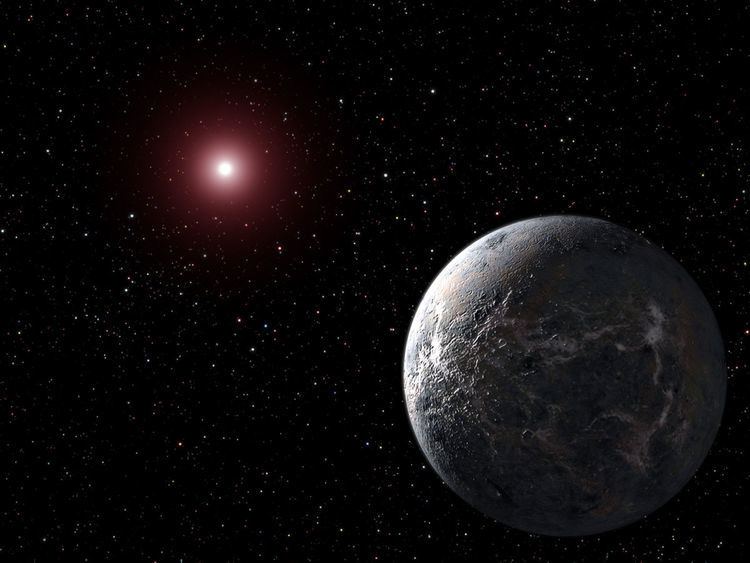 | ||
An ice planet is a theoretical type of exoplanet with an icy surface of volatiles such as water, ammonia, and methane. Ice planets consist of a global cryosphere. They are bigger versions of the small icy worlds of the Solar System, which includes the moons Europa, Enceladus, and Triton, the dwarf planets Pluto and Eris, and many other small Solar System bodies such as comets.
Contents
Characteristics and habitability
Ice planets usually appear nearly white with geometric albedos of more than 0.9. An ice planet's surface can be composed of water, methane, ammonia, carbon dioxide (known as "dry ice"), carbon monoxide, and other volatiles, depending on its surface temperature. Ice planets would have surface temperatures below 260 K (−13°C) if composed primarily of water, below 180 K (−93°C) if primarily composed of CO2 and ammonia, and below 80 K (−193°C) if composed primarily of methane.
On the surface, ice planets are hostile to life forms like those living on Earth because they are extremely cold. Many ice worlds likely have subsurface oceans, warmed by internal heat or tidal forces from another nearby body. Liquid subsurface water would provide habitable conditions for life, including fish, plankton, and microorganisms. Subsurface plants as we know it could not exist because there is no sunlight to use for photosynthesis. Microorganisms can produce nutrients using specific chemicals (chemosynthesis) that may provide food and energy for other organisms. Some planets, if conditions are right, may have significant atmospheres and surface liquids like Saturn's moon Titan, which could be habitable for exotic forms of life.
Pluto and candidates
Although there are many icy objects in the Solar System, there are no known ice planets (though Pluto was considered an ice planet until its reclassification in 2006). If a 9th planet suggested in 2016 is found, it will be an ice planet of many times the earth's mass with a surface temperature potentially under 70K. There are several extrasolar ice planet candidates, including OGLE-2005-BLG-390Lb, OGLE-2013-BLG-0341L b and MOA-2007-BLG-192Lb.
